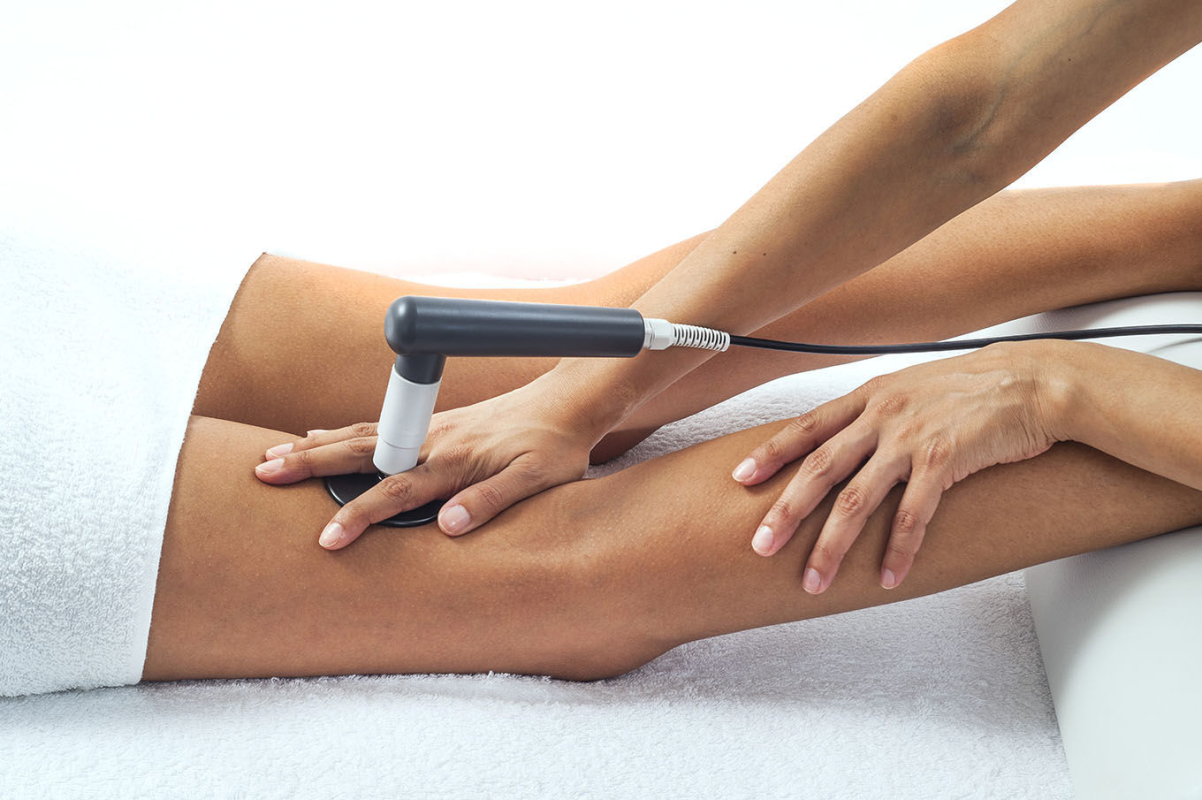The therapy involves the application of high-frequency electromagnetic waves to the patient’s body through a handheld device or electrodes. These electromagnetic waves induce a controlled heating effect in the targeted tissues, which can lead to several therapeutic benefits:
- Pain relief: The increased temperature in the tissues helps to reduce pain by increasing blood flow, relaxing muscles, and promoting the release of endorphins, the body’s natural painkillers.
- Tissue repair and regeneration: The controlled heating stimulates cellular metabolism, leading to improved tissue repair and regeneration. This can be beneficial for treating injuries, sprains, and strains.
- Reduced inflammation: Tecar therapy may help to decrease inflammation by improving blood circulation and lymphatic drainage in the affected area.
- Improved joint mobility: By reducing muscle tension and increasing tissue elasticity, Tecar therapy can enhance joint mobility and range of motion.
- Accelerated recovery: The therapy can be useful for athletes and individuals recovering from injuries, as it may speed up the healing process and promote faster recovery.
Tecar therapy is considered non-invasive and is generally well-tolerated by patients. It is commonly used in sports medicine, orthopedics, and rehabilitation settings, but its effectiveness may vary depending on the specific condition being treated and individual patient factors.
How to use tecar therapy machine:
Tecar therapy should be administered by a trained healthcare professional, such as a physical therapist or a certified Tecar therapist. The therapy involves using a Tecar device that emits high-frequency electromagnetic waves to the targeted areas of the body. Here are the general steps involved in using Tecar therapy:
- Evaluation: Before starting Tecar therapy, the healthcare professional will conduct an initial evaluation to assess your condition and determine if Tecar therapy is suitable for your specific needs.
- Preparation: You will be asked to remove any metal objects or jewelry from the treatment area, as metal can interfere with the electromagnetic waves.
- Application of Tecar device: The therapist will apply a conductive gel to the skin in the treatment area. This gel helps to enhance the transmission of electromagnetic waves and ensures good contact between the skin and the Tecar device.
- Selecting the appropriate mode: Tecar therapy devices often have different modes, such as capacitive and resistive modes. The therapist will select the appropriate mode based on your condition and treatment goals.
- Applying the therapy: The therapist will move the Tecar device in a controlled manner over the treatment area. The device emits electromagnetic waves, which generate a heating effect in the tissues. The therapist will adjust the intensity and duration of the therapy based on your comfort level and treatment requirements.
- Monitoring: Throughout the session, the therapist will closely monitor your response to the therapy, making adjustments as needed to ensure safety and effectiveness.
- Post-treatment care: After the therapy session, the therapist may provide additional instructions for post-treatment care, such as avoiding extreme temperatures, rest, or specific exercises to complement the therapy’s effects.
It’s essential to follow the therapist’s recommendations and attend multiple therapy sessions as prescribed for optimal results. Tecar therapy is usually well-tolerated, but if you experience any unusual or adverse reactions during or after treatment, be sure to inform your therapist immediately.
Remember that Tecar therapy, like any medical treatment, should be administered by a qualified professional who understands your specific condition and medical history. Always consult with a healthcare provider to determine if Tecar therapy is appropriate for you and your health needs.






